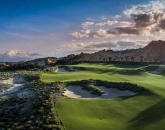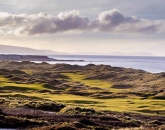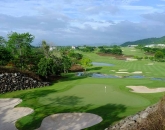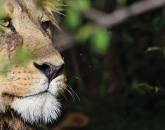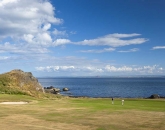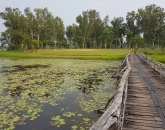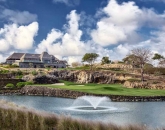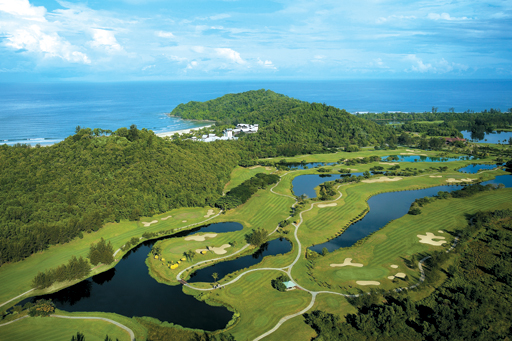 Any place once known as “The land below the wind” must surely appeal as a golf destination, especially if it’s in a coastal environment. Wind, after all, can cause big problems for a small white ball in flight – as anyone who has played seaside courses around the world will attest.
Any place once known as “The land below the wind” must surely appeal as a golf destination, especially if it’s in a coastal environment. Wind, after all, can cause big problems for a small white ball in flight – as anyone who has played seaside courses around the world will attest.
But that’s not all. Throw in pristine jungle, the tallest mountain in Southeast Asia, wildlife reserves, an eclectic mix of cultures, rich colonial history, affordability, a moderate tropical climate and some wonderful golf resorts and you’ve got a perfect golf tourism destination.
This is Sabah, Malaysia’s most eastern state on the northern tip of the island of Borneo.
But before singing Sabah’s golf virtues, let’s set things straight about the wind: Sabah does have wind in the form of (usually) pleasant cooling coastal breezes. What it doesn’t have, and what its former epithet implies, are typhoons that regularly batter the coastlines of destinations to Borneo’s northeast, usually in February/March and September/October.
Sabah’s capital, Kota Kinabalu, is what many residents of major metropolises like Hong Kong might describe as the perfect entry point for a golf holiday. Such as it is, the “city”, known as KK, has less than half a million residents, is only 10 minutes from the airport, sits handsomely beside the turquoise waters of the South China Sea and has a championship golf course on its doorstep.
What more do you want? Well, try another beautiful golf resort course along the coast just 45 minutes away, complete with an on-site orang-utan wildlife sanctuary that, in itself, provides a totally unique experience.
Located closer to the Philippines than the Malay peninsula, Sabah is a potpourri of cultures and religions. Its three million inhabitants comprise 32 ethnic groups that live in peaceful harmony. Almost a third of the population is Filipino or Indonesian and 10 per cent are of Chinese origin.
Formerly known as British North Borneo, Sabah and much larger neighbouring Sarawak are Malaysia’s two most eastern states on Borneo. They joined the Malay federation after North Borneo achieved independence from Britain in 1963.
Sabah’s two premier golf courses are, respectively, part of Sutera Harbour Resort Tand Shangri-La Rasa Ria Resort. Recognising their potential to substantially increase international golf tourism, the pair has put aside competitive differences to form a destination-marketing program called Sabah Golf (sabah-golf.com).
Sabah Golf showcases some of the most friendly, accessible and enjoyable golf in Southeast Asia, which means Sabah may not be flying under the golf tourism radar much longer.
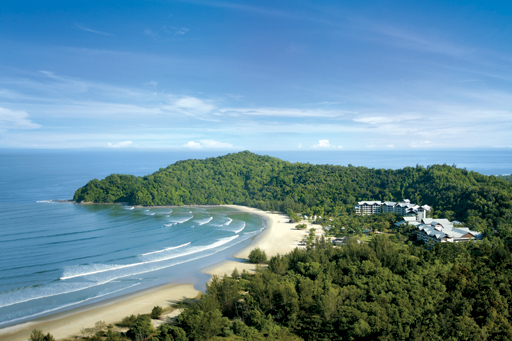 The two courses hosted the World Amateur Inter-Team Golf Championship in April, at the same time as a group of 25 tour operators from Europe, Australia and other markets were visiting the properties before the International Association of Golf Tourism Operators meeting in Kuala Lumpur.
The two courses hosted the World Amateur Inter-Team Golf Championship in April, at the same time as a group of 25 tour operators from Europe, Australia and other markets were visiting the properties before the International Association of Golf Tourism Operators meeting in Kuala Lumpur.
Their verdict? A big thumbs-up for Sabah as a legitimate golf tourism destination. As any tour operator will attest, most golf tourists are looking for something different. Sabah certainly fits this bill.
Sutera Harbour, a large complex that, as its name implies, nestles on its own mini harbour on the edge of Kota Kinabalu, boasts 27 holes of championship golf designed by former Australian tour pro, Graham Marsh.
Host of two stages of the One Asia qualifying school in 2012 and 2013, Sutera Harbour’s golf credentials are considerable. Split into three nines – Garden, Lakes and Heritage – every hole plays within sight of the sea, the city or the resort hotels. Despite a relatively flat layout, Marsh’s clever use of mounds and bunkering ¬– combined with a modicum of man-made water – makes this an interesting and enjoyable test of golf. Coconut palms provide a visual differentiation between holes and frequent views across the South China Sea to the Manukan Islands provide a scenic element to the complex.
Sutera Harbour also has the only night golf in East Malaysia, providing a pleasant outlet during the mild evenings that characterise this part of the tropics and, if you’re willing, enabling 17 hours of golf to be played each day!
Among the best holes are the short par-4 24th hole on the Garden layout that plays right beside the water and has a precariously placed green. Miss it to the left and you’re dead; play right and you’ll have an awkward chip to the pin.
Shangri-La Rasa Ria Resort is home to Dalit Bay Golf Club, situated at the entrance to the property. This beautiful water and woodlands course rests in the shadow of the 4095-metre-Mt Kinabalu, the highest mountain in the region.
Set within the 400-acre resort that nudges the ocean at Pantai Dalit beach, the golf course was designed by another Australian, Ted Parslow. Bordered by the Tambalang and Mangkabong rivers with stunning vistas to Mt Kinabalu in the distance, it offers a classic wetland golf experience with water on every hole.
The course can be easily walked, or golfers may take carts if they wish. The mountain scenery provides a perfect backdrop for an enjoyable round at any time of year.
The signature hole, the par-3 11th, plays across the mouth of the Tambalang River, right beside the South China Sea. Like every hole on the course, a precise shot is needed to avoid a wet result.
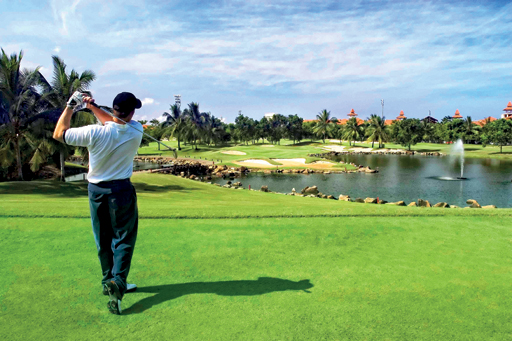
Trip Planner
Where to Play
Sutera Harbour Golf & Country Club ****
27 holes designed by Graham Marsh
Green fees (weekday/weekend): MYR 250 / 330 (HK$650 / 835)
Contact: sabah-golf.com
Dalit Bay Golf & Country Club ****
18 holes designed by Ted Parslow
Green fees: MYR 320 (HK$810), which includes cart and insurance
Contact: sabah-golf.com
Attractions
As well as golf, among Sabah’s other highlights are a visit to Kinabalu Park, which in 2000 became Sabah’s first World Heritage site, and to Mt Kinabalu itself; a steam train trip on the 36-mile North Borneo Railway, which first operated in 1914; and a short boat trip from Sutera Harbour Resort to Manukan Island, the second largest island in the Tunku Abdul Rahman Marine National Park.
A special highlight of the Shangri-La Rasa Ria Resort is its nature reserve, established in 1996 in collaboration with the State Wildlife Department of Sabah. The reserve protects endangered species of fauna in Sabah and species that that are endemic to the region.
Here visitors can see at first-hand how orangutans and other species are being protected from human intervention. Typically, young orangutans are brought into the reserve where they are fed and nurtured until able to fend for themselves, when they are released back into their natural habitat.
Getting There
Air Asia (airasia.com), Dragonair (wwww.dragonair.com) and Malaysia Airlines (malaysiaairlines.com) operate direct flights from Hong Kong to Kota Kinabalu (journey time: three hours).
Click here to see the published article.


